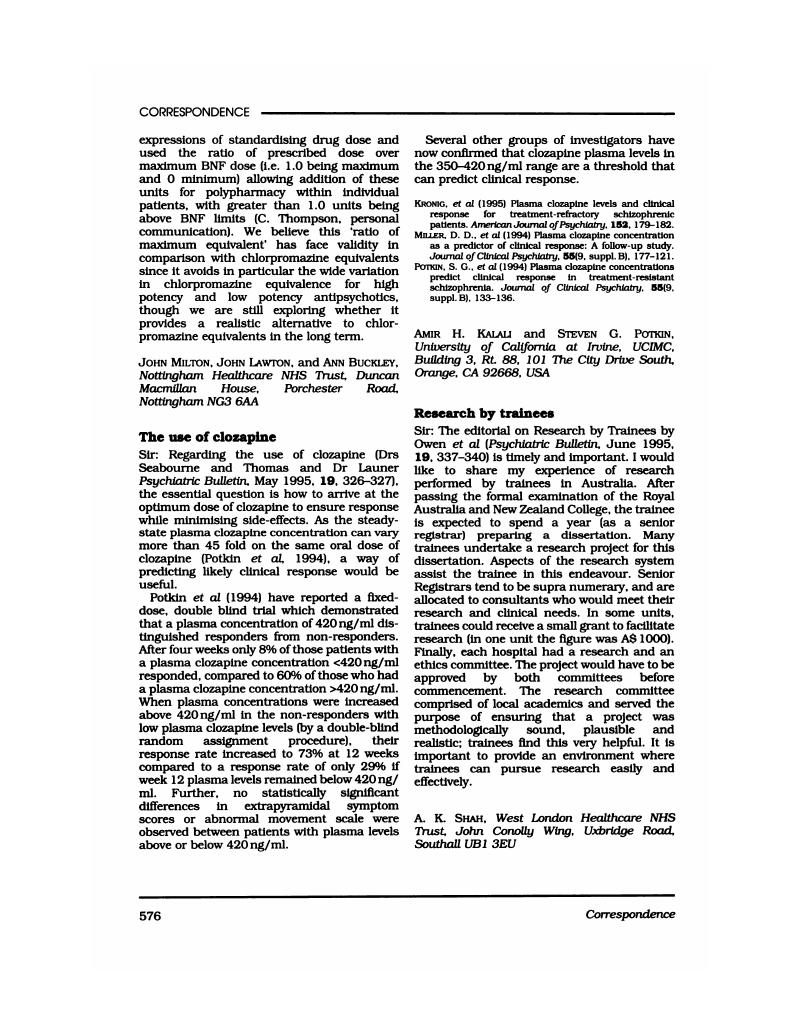No CrossRef data available.
Article contents
The use of clozapine
Published online by Cambridge University Press: 02 January 2018
Abstract
An abstract is not available for this content so a preview has been provided. As you have access to this content, a full PDF is available via the ‘Save PDF’ action button.

- Type
- Correspondence
- Information
- Creative Commons
- This is an Open Access article, distributed under the terms of the Creative Commons Attribution (CC-BY) license (http://creativecommons.org/licenses/by/4.0/), which permits unrestricted re-use, distribution, and reproduction in any medium, provided the original work is properly cited.
- Copyright
- Copyright © Royal College of Psychiatrists, 1995
References
Kronig, , et al (1995) Plasma clozapine levels and clinical response for treatment-refractory schizophrenic patients. American Journal of Psychiatry, 152, 179–182.Google Scholar
Miller, D. D., et al (1994) Plasma clozapine concentration as a predictor of clinical response: A follow-up study. Journal of Clinical Psychiatry, 56(9, suppl. B), 177–121.Google Scholar
Potkin, S. G., et al (1994) Plasma clozapine concentrations predict clinical response in treatment-resistant schizophrenia. Journal of Clinical Psychiatry, 55(9, suppl. B), 133–136.Google Scholar
A correction has been issued for this article:
Linked content
Please note a has been issued for this article.



eLetters
No eLetters have been published for this article.